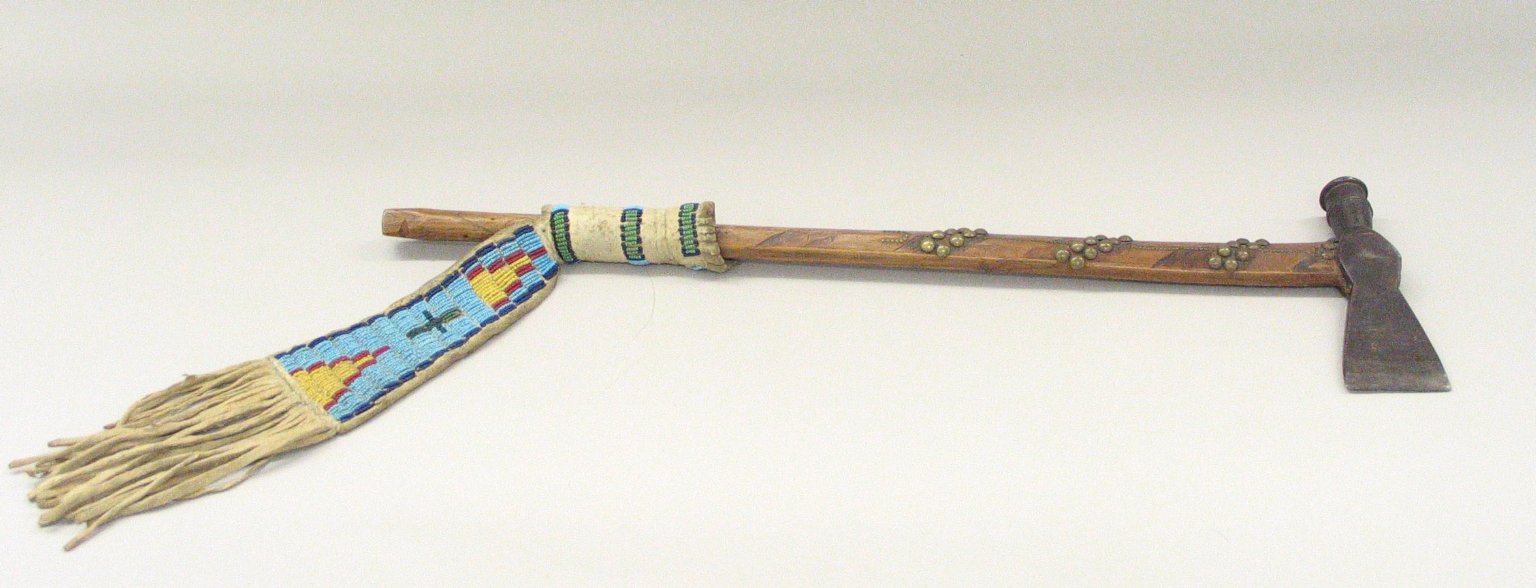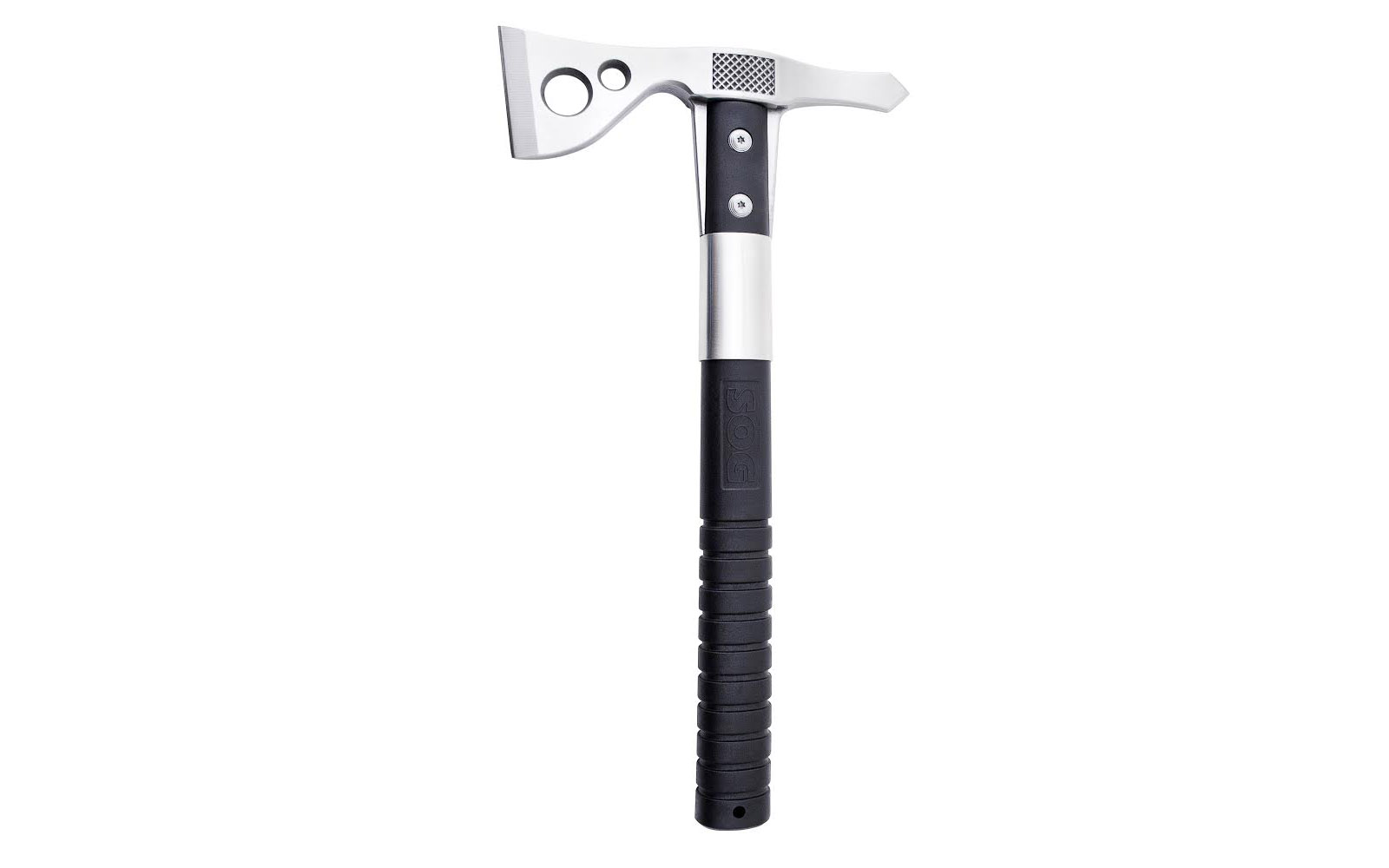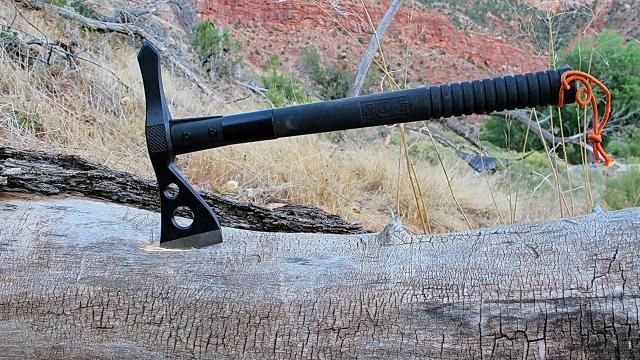From the Native Americans to Vietnam War soldiers, the venerable Tomahawk is finding new favour in this era of asymmetric warfare and, well, with the guys who prepare for battle when they go camping. This is what they’re for and how you can actually find a use for one.
To find out, we talked with SOG Specialty Knives and Tools‘ Chris Cashbaugh, a decent left-handed tomahawk thrower. SOG and its products were inspired by the knives and tomahawks of MACV-SOG, a highly classified, multi-service United States special operations unit which conducted covert operations before and during the Vietnam War.
How does a tomahawk differ from an axe or hatchet?
Chris Cashbaugh: Typically, an axe or hatchet is not designed specifically for military or tactical uses. Axes excel at chopping, splitting, shaving and more, plus they can be used for many of the same chores as an edged tool. The handle or grip is typically more ergonomic in shape and sometimes offers multiple hand positions and an axe or its little brother, the hatchet, is typically heavier to help facilitate chopping. In many ways, axes and hatchets are designed for one activity — chopping — and they do it very well.
A tomahawk is going to be lighter. A ‘hawk is more useful for combat and the straight handle is ideal for releasing while throwing. It does good job at bushcraft operations and can handle some chopping, but it’s not designed like an axe for that one chore. They are fun to take into the wilderness and throwing ‘hawks is a real blast.
Also, they have a military/tactical look to them and a deep military history.
Are they actually useful as a breaching tool for the military? Most guys I know say they typically use explosives and rams to “kick” down doors.
CC: In quick response situations they can be used to breach doors and windows. This is true in situations where there might be a fortified door or there isn’t enough time to setup an explosive charge. They are excellent tools for breaking glass — particularly using the spike — and they are small enough in the hand that they can get that job done quickly and in tight quarters.
What uses do they have for soldiers beyond breaching?
CC: Tomahawks can be used for chopping, splitting, digging, prying or even cutting rope. Typically, anything that an edged tool can be used for, you can use a tomahawk for. It might not be the best option for any one of those jobs, but it will work in a pinch and it’s a tool that can do multiple jobs. That’s very beneficial to soldiers.
I guess, theoretically, they can be used in close-quarters combat, but that doesn’t figure into the design nor is it an expected uses.
They are also widely used for throwing at targets. If you’ve never done that, it’s a really fun way to pass the time if you’re sitting around base, waiting for your next patrol.
When did the tomahawk first find popularity with modern soldiers and how has it evolved to suit there needs?
CC: Tomahawks, or some version of them, have been popular with the military since the 18th century and were used by both sides of the American Revolution. Robert’s Rangers, the story goes, used them in the French and Indian War, which is neat when you consider the name is a version of an Algonquin word for a stone-headed tool of the same shape.
During the Revolution, tomahawks were valued for their versatility in wilderness tasks and effectiveness as a close-quarters weapon. As modern firearms increased in reliability, the need for a close quarters weapon wained. Then, in the mid-1960s, there was a rise in popularity for them among American troops in the Vietnam War. The MACV-SOG group, from which SOG Knives takes its name, had a version of the tomahawk, which are valuable collector’s items today.
They have seen a big surge in popularity with the military and general population over the last 10 years, due to introductions of new designs and the unique needs of current urban battles. The biggest evolution in the tomahawk has been the transition from natural handles like wood to more modern, advanced materials like glass-reinforced nylon, composites and metals that make them both lighter and stronger.

An original Oglala Sioux weapon.
What advantages does the tomahawk have over an axe or hatchet for civilians?
CC: For a civilian, the tomahawk provides a multi-function, lightweight tool that can be easily carried and used for chopping, cutting, splitting and most any other cutting task. An axe can do that too, but they’re typically larger, heavier and more burdensome to carry. So, the biggest advantage is the weight savings, which makes them easier to take along on a hike or paddle.
When designing a tomahawk, what are the critical factors or differentiators you try to achieve?
CC: Good materials are first and foremost. The biggest demand on tomahawks is that they be able to take a pounding. So, they have to be light, strong and reliable. On higher-end tomahawks — tools that will be used by rescue, law enforcement or military — there is a good deal of thought put into the back end of the head. Does it need to be a spike, for breaching and entrenching, or more hammer-like?
Typically, a tactical design has a blade edge and a spike edge, and the higher the quality of steel used for the blade meads a higher cost to the tomahawk.
We also think about the handle. Since a tomahawk isn’t ergonomically designed like an axe or hatchet, the handle may include some design features to make gripping it easier.

With a stainless steel head and glass-reinforced nylon handle, the SOG Fasthawk represents modern tomahawk design.
Why would you throw a tomahawk?
CC: It is fun. The purpose of throwing them is mainly for recreation, but there are competitions based around throwing knives, axes and tomahawks. The secret to throwing a tomahawk is to find the perfect rotation. You’re not throwing them 25 or 30 yards, you’re throwing them so they rotate once, maybe twice. A three-rotation throw into a target is quite a feat.
What advice can you give to tomahawk users, be they civilian or military?
CC: Treat it like you would a sharp knife; you always want to cut away from yourself. When chopping, ensure that if you miss the intended material, the tomahawk will not hit you or anyone else nearby. Users should always wear protective equipment when chopping, such as gloves or eye protection. Keep it in its sheath until it’s ready to come out for work or play.
For some reason, whenever somebody picks up a tomahawk, they always want to run a finger along the blade edge to see if it’s sharp. It’s fascinating to watch people do that, and I’m not sure why people do it, but it usually ends in blood and stitches.
Picture: Al Hikes AZ/Flickr
